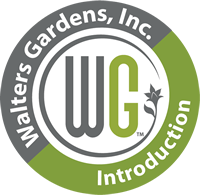Dicentra spectabilis 'Hearts on Fire' PPAF CPBRAF



Common Name: Old-Fashioned Bleeding Heart
This new twist on a garden classic is the perfect perennial to set your shade garden on fire! Early to emerge in spring, golden foliage emerges with bronze highlights. The dark color translates to dark stems, which contrast beautifully with the bright foliage. True red flowers appear in late spring, blooming out of the foliage to maximize display. Long scapes flower for an extended period of time compared to traditional varieties. A showstopper in the early season garden!
After putting on this fantastic display, Old-Fashioned Bleeding Hearts usually go dormant until the following spring. However, if plants are kept well-watered during the spring, dormancy may be delayed until late summer or early fall. Other bushy perennials, such as Hosta, Geranium, or Sedge, should be planted nearby to fill in the resulting gaps.
20ct Plug Tray |
72ct Plug Tray |








